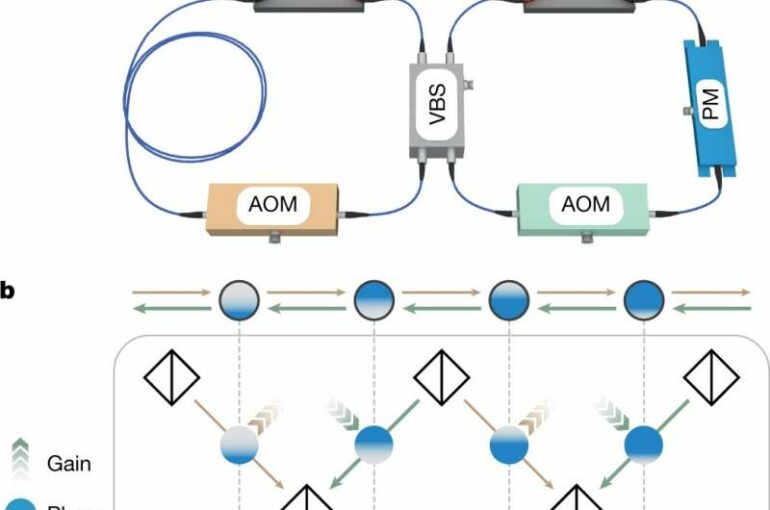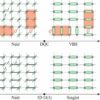Together with their colleague Professor Stefano Longhi (Polytechnic Institute of Milan), physicists from the group of Professor Alexander Szameit (University of Rostock) have discovered a triple phase transition. At the critical moment, three fundamental properties of an intricate artificial material change abruptly: Topology, conductivity, and energy exchange with the environment. These results challenge the established view that these three major material properties would be largely independent from one another. The discovery was recently published in the journal Nature and could pave the way toward a holistic understanding of the inner workings of complex materials.
Phase transitions, in which the properties of a material change abruptly, are a crucial concept in nature. Perhaps, their best-known manifestation takes place in winter: tiny deviations from the temperature of 0 degrees Celsius (32 degrees Fahrenheit) determine whether water exists in its liquid form or as solid ice and snow. Less common are phase transitions in which two properties change at the same time: As so-called superconductors are cooled towards absolute zero (-273 degrees Celsius / -460.4 degrees Fahrenheit), they lose their electrical resistance completely and simultaneously change their magnetic properties. Even more elusive are phase transitions that link three different properties. With cutting-edge optical technologies, the team led by Professor Alexander Szameit recently revealed the existence of such an elusive triple phase transition, in which three independent characteristics of a material jointly undergo an abrupt change.
“We discovered that in a certain class of solids, known as quasicrystals, three fundamental properties are linked to one another unexpectedly,” Professor Szameit explains. Quasicrystals, whose discovery led to a Nobel Prize in 2011, are among the rarest structures in nature: the only two minerals in this class were discovered in a meteorite in the Russian Far East and therefore literally are of extra-terrestrial origin. “To study the characteristics of these fascinating entities, we intertwined the paths of light in kilometer-long optical fibers. The resulting complex dynamics faithfully mirror the motion of electrons in quasicrystals,” explains Ph.D. student Sebastian Weidemann, who designed and conducted the experiments together with Dr. Mark Kremer. “While studying the light propagation in these systems, we made the astonishing discovery of a triple phase transition, in which the topology, conductivity and exchange of energy between the synthetic quasicrystal and its environment change abruptly.” Sebastian adds.
The topology of a material indicates its capacity to support robust edge currents; a concept, which was awarded with the Nobel Prize in 2016. The internal structure of a material determines whether any current can flow in the first place. The underlying idea for this phenomenon was honored with a Nobel Prize in 1977. The attempt to systematically describe the exchange of energy with the environment eventually gave rise to the notion of the so-called PT-symmetry, which was not introduced into physics until 1998. Yet, these concepts seemed to be largely independent of each other. “Our results demonstrate that they may instead be three aspects of a deeper connection that has yet to be discovered,” Szameit concludes. “The discovery of such a triple phase transition and the possible unification of topology, conductivity and energy exchange, represents a breakthrough in the fundamental science of propagation of all types of waves, ranging from light to sound and even electrons.”
These findings were recently published in the renowned journal Nature.
More information:
Sebastian Weidemann et al, Topological triple phase transition in non-Hermitian Floquet quasicrystals, Nature (2022). DOI: 10.1038/s41586-021-04253-0
Provided by
University of Rostock
Citation:
Triple phase transition in a photonic quasicrystal observed (2022, January 20)



